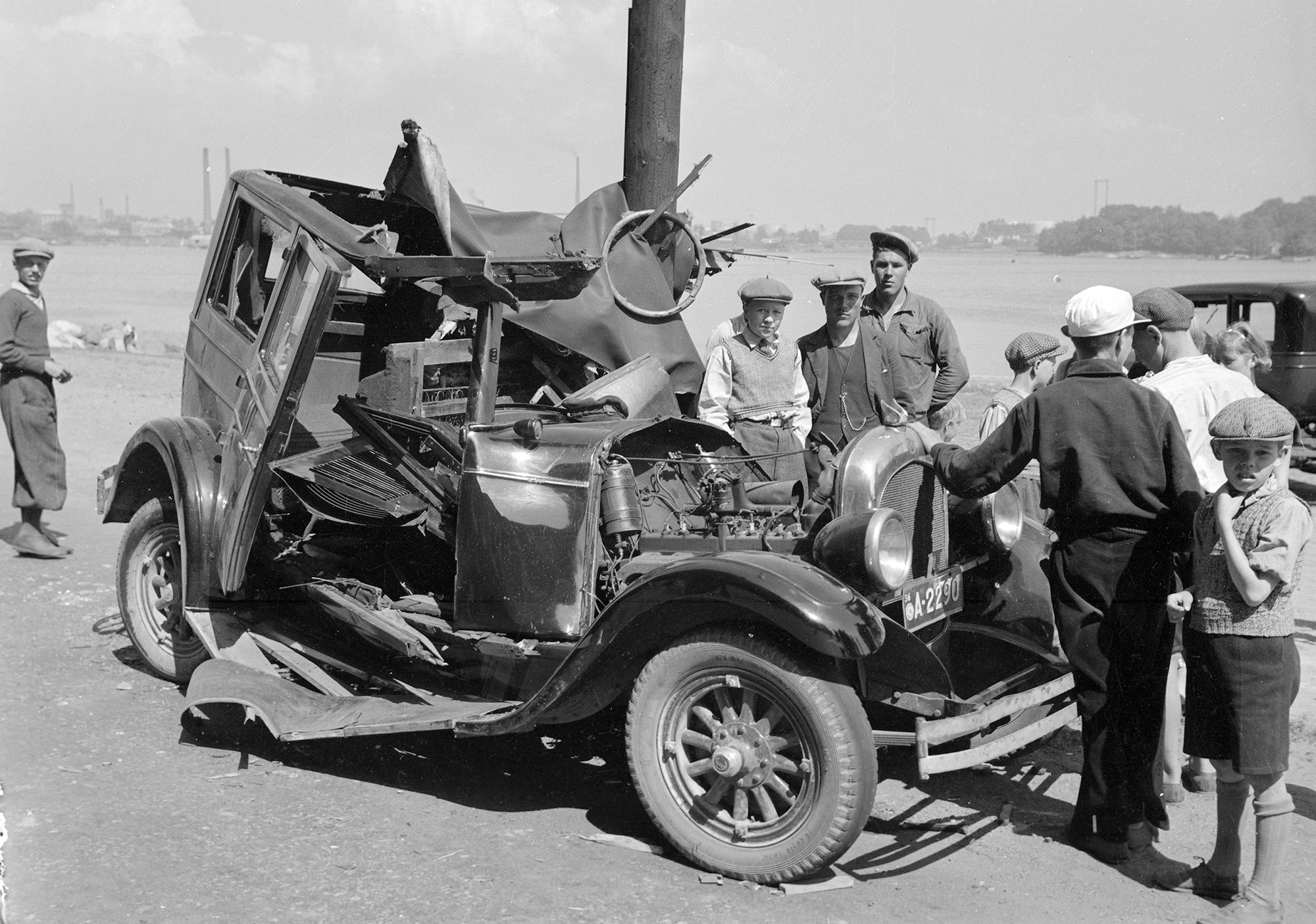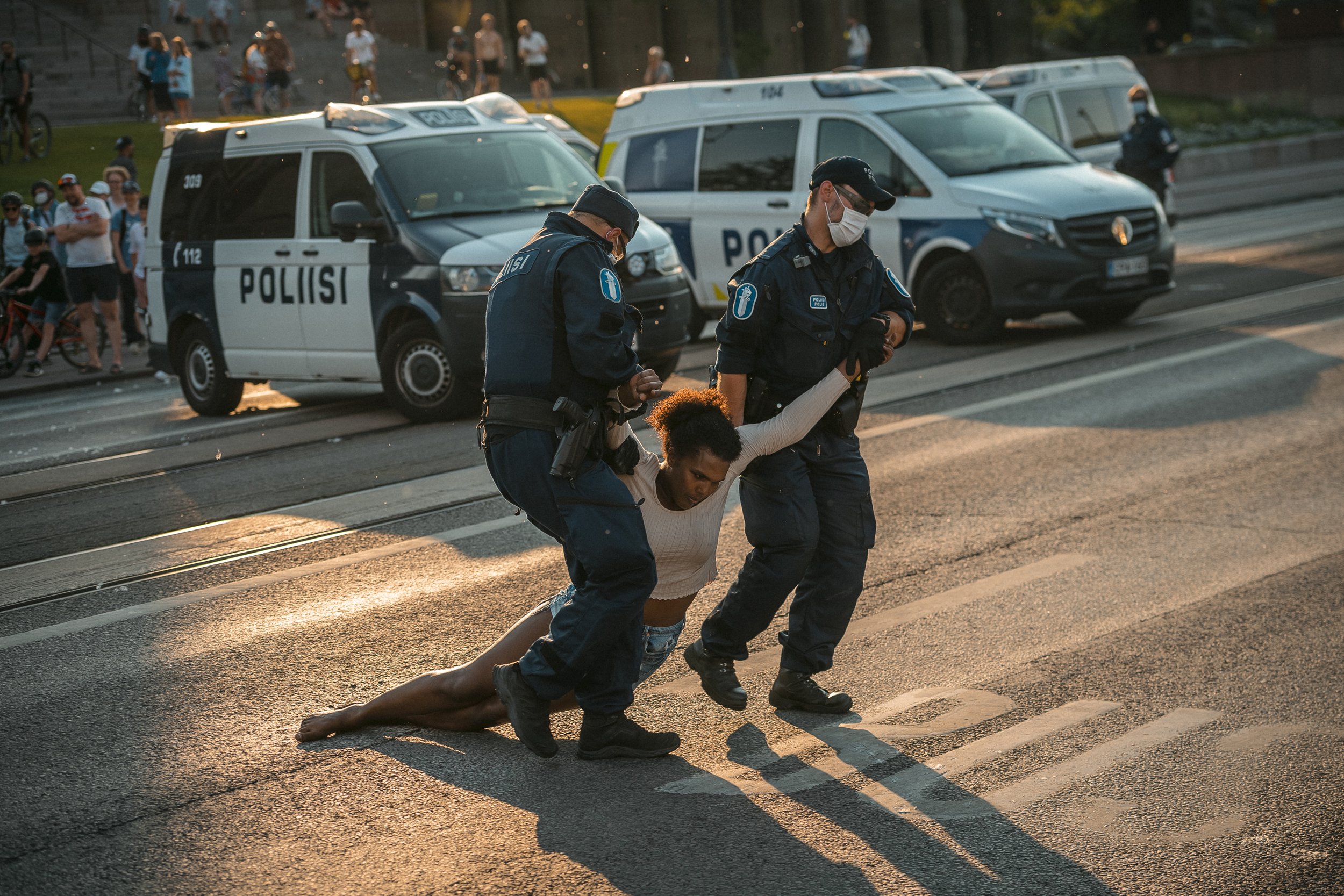
Onnettomuuspaikalla kuvaamista ei ole syytä kieltää
Liikenneturvan kyselyn perusteella yli puolet suomalaisista kannattaa onnettomuuspaikalla kuvaamisen kieltämistä lailla. Pelastusalan ammattilaisista kuvaamista olisi valmiita rajoittamaan yli 90 prosenttia. Kieltoa perustellaan onnettomuuden uhrien yksityisyyden suojaamisella ja pelastustyöntekijöiden työskentelyn turvaamisella.
Aiheesta käytävässä julkisessa keskustelussa sekoittuvat kuvan ottaminen ja sen julkaiseminen. Pelastusalan toimijoiden Kuvaa elämää – älä onnettomuuspaikkaa -kampanjassa väitetään virheellisesti onnettomuuspaikalla kuvaamista yksinomaan vahingolliseksi toiminnaksi. Kampanjan tavoitteet, kuten onnettomuuden uhrien yksityisyyden suojan turvaaminen ja vaaratilanteiden ehkäisy onnettomuuspaikoilla, ovat kannatettavia. Keskittymällä kuvaamiseen kampanja ja keskustelu kuitenkin osuvat ohi todellisista ongelmista.

Prohibition does not work – The ethics of accident scene photography
The recent accident in Tapiola, Espoo, has rekindled concerns surrounding the ethics of accident scene photography. Following the incident, images and videos captured at the scene ignited a debate, with some arguing that such images constitute an invasion of privacy or are simply unsettling, while others contend that they serve a vital role in documenting reality and aiding in the assessment of the incident.
Once again, the controversy seems to obscure an essential distinction – that between capturing a photograph and deciding to publish it. Two actions necessitating separate ethical considerations.
Public discourse frequently reduces the debate to calls for blanket bans on photography at accident scenes, even though the subsequent decision to publish the captured images necessitates a far more delicate balancing act: on one side, the need to illuminate the seriousness of the situation, and on the other, the risk of causing distress or violating privacy.

When the spotlight blinds: Rethinking photojournalism's relationship with awards
As an award-winning photojournalist, I have personally experienced the positive impact of accolades in this fiercely competitive field. The awards, prize money, and grants I have received over the years have undoubtedly advanced my career. However, this recognition has also prompted me to reflect on the role that awards play in photojournalism.
Awards serve as a motivational force, pushing photographers to pursue stories beyond the confines of an assignment, often resulting in personal projects that showcase creativity and passion. Indeed, past Finnish Press Photo competitions have celebrated many such personal endeavours. In fact, two of my three winning news photos in recent years were not captured during assignments.

We must dare to show people’s suffering
A few years ago, a photograph of Alan Kurdi, a three-year-old boy who washed up on the shore of the Mediterranean Sea, was published on a Turkish newspaper’s website and quickly spread around the world. At first, the image was shared on social media, but it soon ended up on the pages of large newspapers as well.
The photo, which was taken by Turkish journalist Nilüfer Demir, reached iconic status perhaps faster than any image before it. The publication of the image also led to criticism. The Finnish newspaper Turun Sanomat decided against publishing the image on the grounds that a similar image of a Finnish child would “never in a million years” be published.